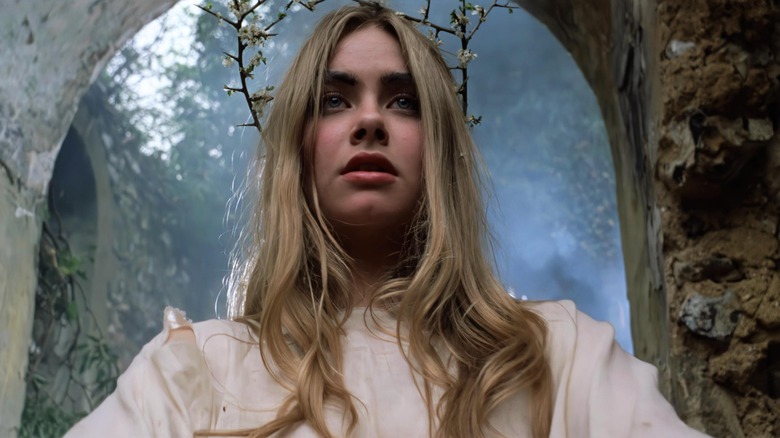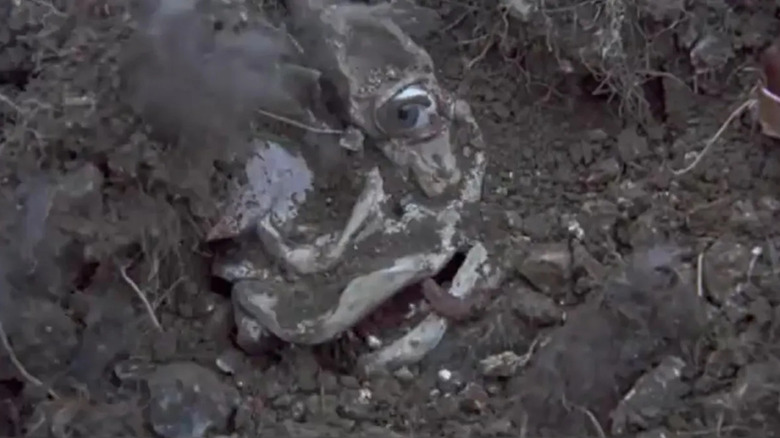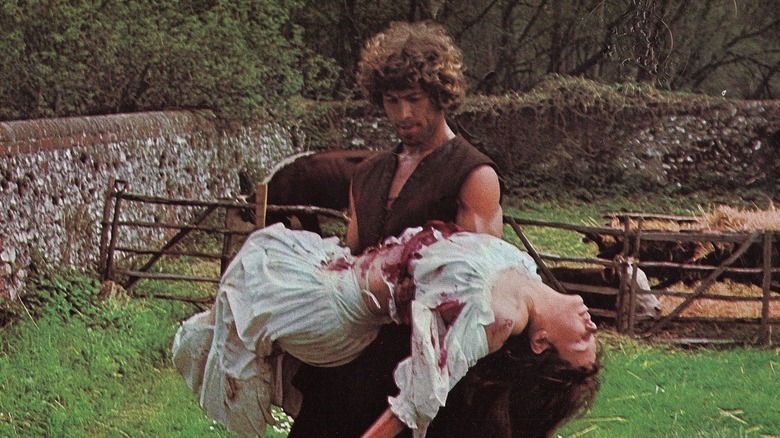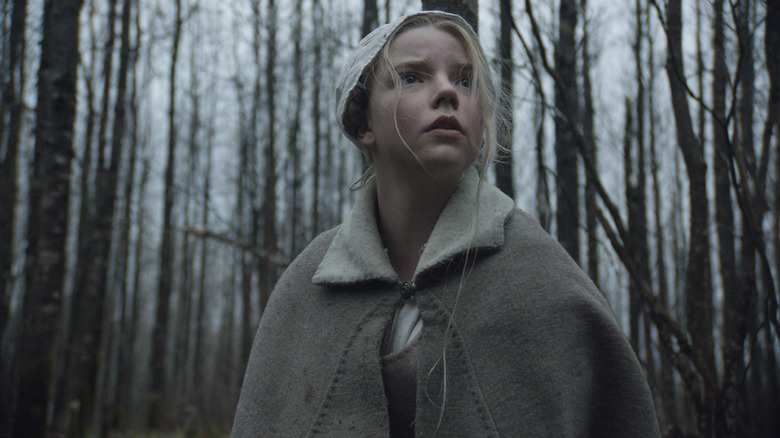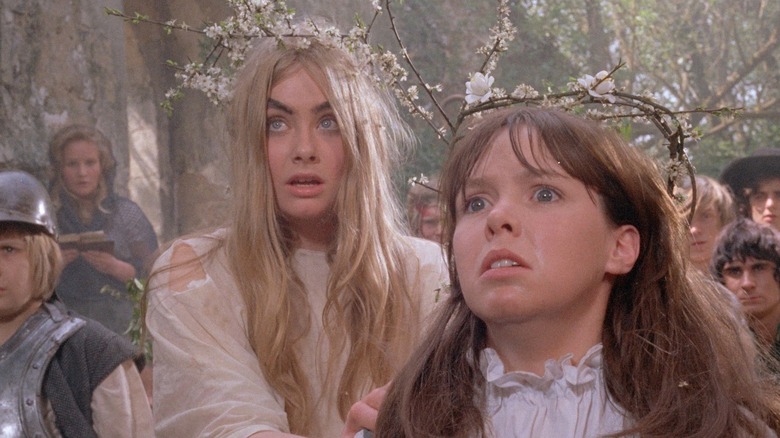How Piers Haggard's The Blood On Satan's Claw Became A Cornerstone Of Folk Horror
When I left England in 2009 to live in the Czech Republic, I was totally done with the whole thing. I was broke, had no career prospects, and hated the lifestyle. If it wasn't for family and a few close friends I would have gladly never set foot on the island again. That disillusionment might have lasted forever if it wasn't for folk horror which, in its strange way, helped me reconnect with my home country.
It was the BBC's wonderfully chilling adaptation of "A Warning to the Curious" that really got me into it. Based on the ghost story by M.R. James, many scenes were filmed in Aldeburgh on the Suffolk coast not far from where I grew up. That really gave me a jolt of recognition; I love the county's desolate beaches and big open skies, and I was suddenly filled with affection and longing for England for the first time in a very long while. As I dug further into British folk horror, I got more of the same sensation: These were films that I could feel in my bones.
The core texts of the folk horror canon are three films that have become known as the "Unholy Trinity:" Michael Reeves's "Witchfinder General," Piers Haggard's "The Blood on Satan's Claw," and Robin Hardy's "The Wicker Man." The middle film of this unofficial trilogy, whose director sadly passed away this week aged 83, is by far the lesser known. Haggard's insidious tale of ancient evil ravaging a small rural community bombed on its first release and might have been forgotten altogether, but over 50 years later it is now cherished as one of the cornerstones of the entire folk horror genre. How did that come about?
So what happens in The Blood on Satan's Claw again?
"The Blood on Satan's Claw" is set in an isolated rural community in 18th-century England, opening in the soil as farm worker Ralph Gower (Barry Andrews) unearths a strangely deformed skull while plowing a field. He's shocked to discover it still has fur and one wormy eye still intact and rushes off to tell the Judge (Patrick Wymark), who dismisses the whole thing as local superstition after the skull vanishes.
The Judge begins to suspect something sinister is afoot when Rosalind (Tamara Ustinov), a young woman spending the night in the attic room of the family he is staying with, appears to have a mental breakdown. As she is taken away to an asylum, her fiancé Peter (Simon Williams) notices that her hand has turned into a horrible claw. Determined to root out the cause of this evil, Peter investigates the attic and is attacked by a clawed furry creature lurking under the floorboards. He tries to fight it with his knife but, when the Judge bursts in to see what all the fuss is about, he finds that Peter has cut his own hand off.
The Judge leaves for London the next day, taking a book about witchcraft with him, and promises to return. In the meantime, a malevolent malaise sweeps through the community. People vanish and children stop attending school, influenced by Angel (Linda Hayden) and forming a deadly cult. After a boy is lured away and murdered and his sister is subjected to sexual assault before suffering the same fate, it becomes clear that Angel has become a high priestess of the Devil, who is growing new body parts and skin for himself on the anatomies of the kids. Will the Judge return and vanquish Satan before he can become complete?
How did The Blood on Satan's Claw become part of folk horror's Unholy Trinity?
"The Blood on Satan's Claw" made its debut in New York in April 1971 on a double bill with "The Beast in the Cellar." This was common practice at the time; "The Wicker Man" was originally chopped down and served up as the B-feature for "Don't Look Now." Despite high hopes for "Satan's Claw" from its distributors, the two movies were pulled after only a week and served their penance for the rest of the year on the drive-in circuit; in Pennsauken, New Jersey, the duo followed "I Drink Your Blood" and "I Eat Your Skin."
"Satan's Claw" developed a small cult following but might have remained largely forgotten if it wasn't for Mark Gatiss, co-creator of "The League of Gentlemen" and "Sherlock" and all-round champion of folk horror. In 2010 he wrote and hosted "A History of Horror," a three-part personal journey through the genre. When he arrived at the films that would become known as the Unholy Trinity, he paid special attention to the lesser-known "Satan's Claw" and talked with director Piers Haggard.
Gatiss is credited with popularizing the term "folk horror" and the unofficial trilogy of films he identified in the documentary stuck together. In his later piece for the British Film Institute, folk horror expert Adam Scovell referred to them as the Unholy Trinity, which are now almost universally accepted by fans as the core texts of the genre.
"The Blood on Satan's Claw" and its influence on folk horror goes deeper than just sharing common traits. Gatiss might have brought the term "folk horror" to a wider audience but it was originally coined by a film critic writing about Haggard's film back in 1970, and the director adopted it when talking about "Satan's Claw" in an interview with Fangoria.
The influence of the Unholy Trinity on modern folk horror
Folk horror has enjoyed a major resurgence in the years since Mark Gatiss hosted "A History of Horror," indicating that cultural tastes have once again swung back towards the rural and the insidious. Ben Wheatley's dark and nasty "Kill List" drew comparisons from critics with "The Wicker Man" and "The Blood on Satan's Claw," and the director cited "Witchfinder General" as an influence on "A Field in England" (via Uncut).
"The Ritual" relies heavily on the classic folk horror trope of city-dwellers getting themselves in deep trouble when they take a shortcut through the woods and encounter a creature-worshipping cult, and it's hard to imagine either "Apostle" or "Midsommar" existing without the long reach of the Unholy Trinity. "Apostle" director Gareth Evans acknowledged as much (via Den of Geek), while Ari Aster has said that his distressing break-up movie was a "contribution to the folk horror genre" (via IndieWire).
Perhaps the best film to come out of the modern folk horror wave to date is "The Witch" by Robert Eggers. In an interview with Fandango, the director name-checked "The Blood on Satan's Claw" as a movie he saw during the pre-production phase, although he claims it wasn't a direct influence on his film. It certainly feels like it was as there are many similarities between the two: You have the period setting and archaic dialect; the evil lurking in broad daylight; the earthiness of the rural setting where you can almost smell the soil and the dank forest floor; and the sense that the doomed family's homestead could be consumed at any moment by the vastness of nature surrounding it.
Does The Blood on Satan's Claw still hold up?
"The Blood on Satan's Claw" is perhaps the weakest film of the Unholy Trinity, lacking the stark focus of "Witchfinder General" or the otherworldly musical outlandishness of "The Wicker Man." It suffers from an uneven pace that belies its origins as an anthology and the language and performances are a bit overripe, often teetering towards Hammer horror histrionics. It is still a deeply evocative film elevated by Dick Bush's atmospheric cinematography, which creates a sense of evil lurking in the muddy lanes and misty woods, and Marc Williamson's eerily off-kilter pastoral score.
If anything, "The Blood on Satan's Claw" is even more bleak and unnerving than its more celebrated counterparts. While "Witchfinder" has showpiece witch-burnings and "The Wicker Man" ends with its protagonist dying a ghastly death in a sacrificial blaze, there is something infinitely more troubling about the children in "Satan's Claw" becoming infected with evil and committing heinous acts. This results in the film's most infamous scene, the ritualistic sexual assault and murder of a village girl. It's rough stuff even by today's standards, especially with the cutaways to the joyful faces of the other kids watching, and Piers Haggard expressed some regret for how the scene was handled when talking to Mark Gatiss on "A History of Horror."
The scene dominates the whole film, making the fiery conclusion when the Judge comes riding in to slay Satan and save the day seem very rushed and abrupt by comparison. Yet despite its flaws, Gatiss was right in placing it alongside "Witchfinder General" and "The Wicker Man" and cementing its reputation as one of folk horror's most influential films. It even contains one line that effectively sums up the whole genre: "You come from the city and cannot know the ways of the country."
